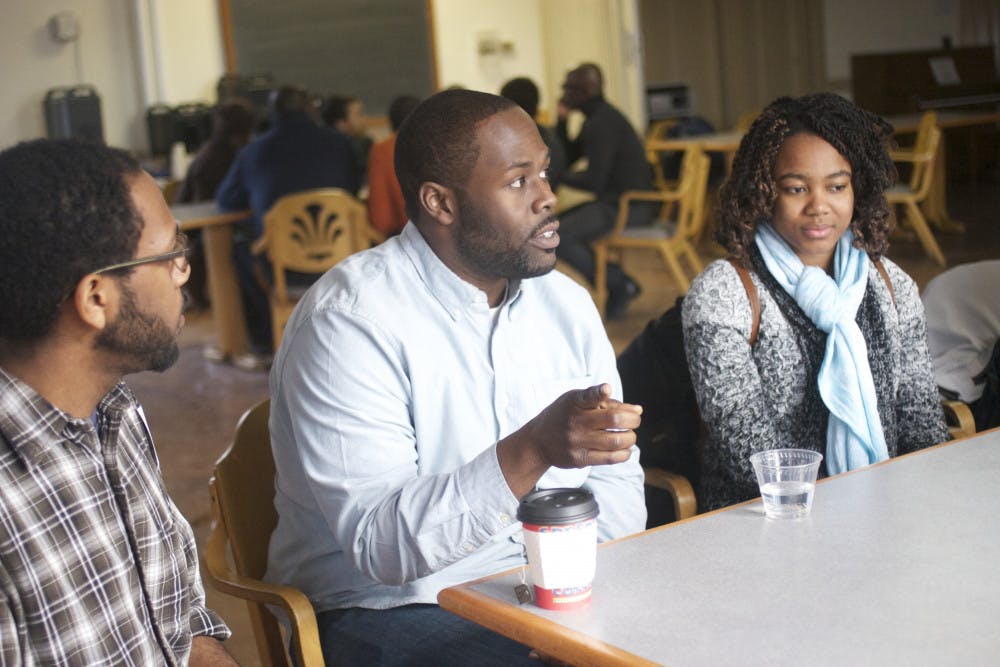Alumni gathered on campus last weekend for the first Alumni of Color Weekend in almost 10 years. Students and alumni socialized and discussed the history of student-of-color organizations on campus, as well as the future of students of color on campus.
They shared similar grievances about the persistence of micro-aggressions towards minorities and the failure of many students to recognize their privilege.
The event, which was previously organized by the administration, this year was the responsibility of Director of Alumni and Parent Programs Ian McCray.
The events for the weekend included several social events such as receptions, meals, a movie screening and a party.
One concern raised frequently over the course of the weekend was the perception of the administration’s ignorance of discrimination on campus. Attendees said that the administration has and continues to “sweep discrimination under the rug” to keep up the College’s image by pretending that racism is not an issue on campus.
“I don’t personally think that things are getting better [for students of color], as a lot of incidents have happened this year, and the administration isn’t even trying to address them,” Shuba Maniram ’17 said.
Another concern raised was the absence of consequences for discrimination beyond a stern talking-to from resident assistants or commons deans. An unregistered “white privilege party” that was held on campus in 2014 drew consistent negative responses from students and alumni, not just because of its racist theme but also because the organizers of the party received no punishment from the administration.
“Students need to learn that there are consequences to discrimination in the real world,” alumna Shantá Lindo ’10 said. “I remember that even when the administration tried to do something, so many kids would talk to their parents, and things would get dropped.”
Discussions surrounding the future of students of color at the College centered largely on the Intercultural Center in Carr Hall. The center is intended to provide a place for academic programming, student-group collaboration, activism and awareness. Alumni and students particularly emphasized the need for students of color to have a space that is not just a forum for discussion about race and discrimination on campus but also a space for students of color to socialize and bond.
Roberto Lint Sagarena, current director of the CCSRE and future director of the Intercultural Center and Associate Professor of American Studies, said, “There is a tendency to over-purpose space because [students of color] are so used to having to fight to justify having spaces. There is value in the social.”
Alumni expressed fondness for the former bicultural center, which despite technically also serving as a center for programming, was remembered primarily by alumni as a social space. Although PALANA house is supposed to provide this function, there is concern that students are just using PALANA as a living space while not being active in race-related discussions and activism on campus.
“Some people are treating PALANA as just a living space, as just a bed and a nice room to sleep in,” a former PALANA resident said at the meeting held to discuss the new Intercultural Center. “Many students are sick of race discussions, as they don’t see any benefit to themselves in them.”
Others emphasized that any social space needs to be open to all members of the community.
“It needs to be stressed that intercultural doesn’t just mean people of color, it means every culture,” Maniram said. “The Intercultural Center needs to stress inclusiveness to avoid intimidating people.”
Alumni also discussed the importance of the College’s admissions policies at the discussion about the Intercultural Center, with one alumnus arguing that, “if we can’t get enough people, none of what we’re doing will mean anything.” To this, Director of Admissions Manuel Carballo stressed the importance of making the school’s reputation known. However, he did note that progress has been made in admissions, as the number of applicants who are people of color doubled during his tenure.
“The problem for attracting students of color isn’t money, it is that these applicants are the best and the brightest and they have many other good options. Recognition [of the College], not money, is the issue,” Carballo said.




